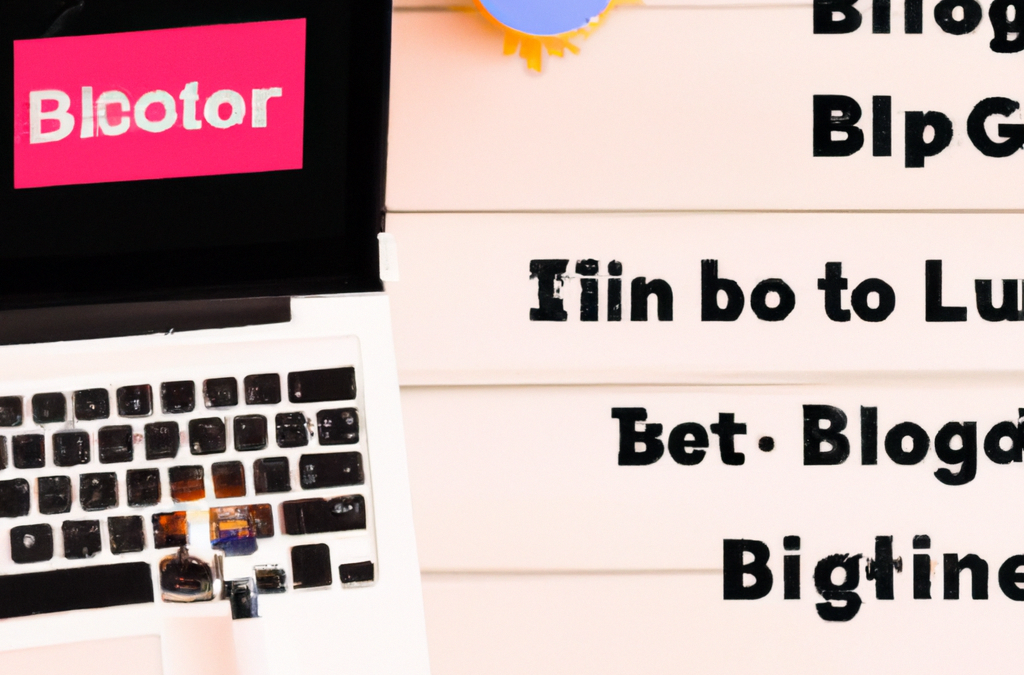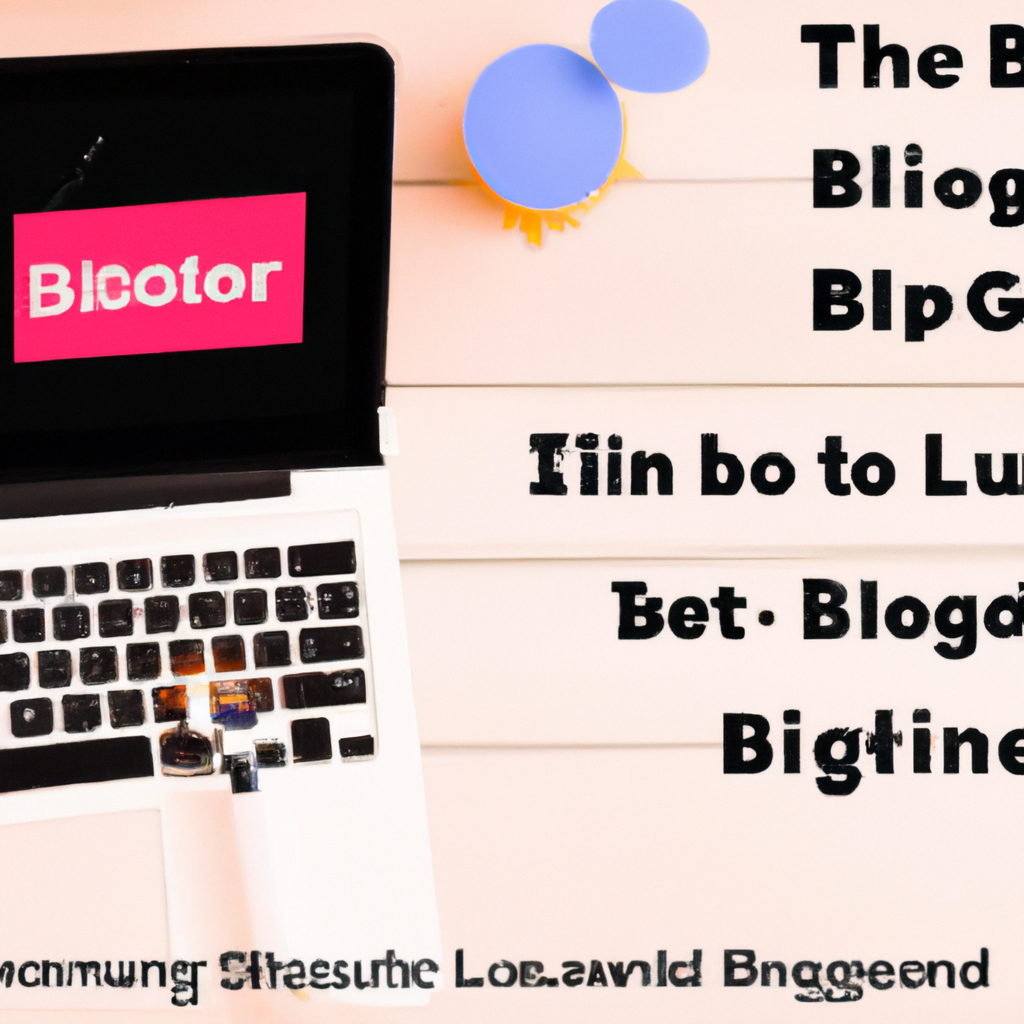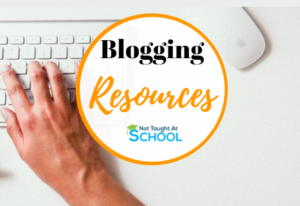So, you've decided to take the plunge and start your own blog in the UK. Congratulations! This beginner's guide will walk you through the essential steps of starting a blog, from choosing a niche to creating engaging content, gaining traffic, and even monetizing your blog. Whether you're a passionate writer, an expert in a specific field, or simply looking for a creative outlet, starting a blog is an exciting venture that can open doors to new opportunities and connections. So, let's get started on this thrilling journey of creating your very own corner of the internet!
Choosing a Blogging Platform
Table of Contents
Starting a blog in the UK can be an exciting and rewarding venture. However, before you dive into the world of blogging, it's essential to choose the right platform to host your blog. With numerous options available, it can be overwhelming to decide which one is the best fit for your needs. Consider the following factors when choosing a blogging platform:
Consider Your Blogging Goals
The first step in selecting a blogging platform is to determine your blogging goals. Are you blogging for personal expression, promoting your business, or looking to monetize your blog? Understanding your objectives will help you narrow down your options and choose a platform that aligns with your goals.
Evaluate Different Platforms
There are several popular blogging platforms, each offering unique features and functionalities. Some of the most widely used platforms include WordPress, Blogger, Wix, and Squarespace. Take the time to research and explore the various platforms to determine which one suits your needs the best.
Assess User-Friendliness
When starting a blog, it's essential to consider the ease of use of the platform you choose. Look for a platform with an intuitive interface and user-friendly features. This will ensure that you can navigate the platform easily and create and manage your blog without any hassle.
Examine Customization Options
Customization plays a vital role in building a blog that reflects your personal style or brand. Look for platforms that offer a wide range of themes and templates to choose from. Additionally, consider if the platform allows for customization through coding or plugins, as this will give you the flexibility to design your blog according to your vision.
Compare Pricing Plans
Budget is an important consideration when choosing a blogging platform. While some platforms offer free plans, they often come with limitations such as restricted features or displaying ads on your blog. Evaluate the pricing plans of different platforms and choose one that fits within your budget while offering the necessary features and flexibility.
Review Technical Support
Technical support is crucial when starting a blog, especially if you're new to blogging or unfamiliar with website management. Check if the platform provides reliable customer support, whether through live chat, email, or a support ticket system. Having prompt and helpful technical support can save you a lot of time and frustration in the long run.
Selecting a Domain Name and Web Hosting
Once you've chosen a blogging platform, the next step is to select a domain name and web hosting provider. Consider the following factors when making these important decisions:
Brainstorming a Domain Name
Your domain name is your blog's unique address on the internet. It's essential to choose a domain name that reflects your blog's purpose or brand. Brainstorm ideas that are memorable, easy to spell, and relevant to your blog's niche.
Checking Domain Availability
After brainstorming potential domain names, it's crucial to check their availability. Many domain registration websites allow you to search for available domain names. Make sure your chosen domain is not already taken to avoid any legal or branding issues in the future.
Purchasing a Domain Name
Once you've found an available domain name, you can proceed to purchase it from a domain registrar. There are numerous reputable domain registration services available, such as GoDaddy, Namecheap, and Google Domains. Compare prices and features offered by different registrars before making your final decision.
Understanding Web Hosting
Web hosting is the service that allows your blog to be accessible on the internet. It's important to understand the different types of web hosting available before selecting a provider.
Types of Web Hosting
Shared hosting, VPS hosting, and dedicated hosting are the three main types of web hosting. Shared hosting is the most affordable option, where multiple websites share server resources. VPS hosting provides a dedicated portion of a server, offering more control and resources. Dedicated hosting means having an entire server for your blog, providing the highest level of control and performance. Consider your blog's needs and budget when choosing the right type of web hosting.
Choosing a Web Hosting Provider
Selecting a reliable web hosting provider is crucial for the success of your blog. Look for providers that offer excellent uptime, fast loading speeds, reliable customer support, and scalable hosting plans. Popular web hosting providers include Bluehost, SiteGround, and HostGator. Read reviews and compare services to make an informed decision.
Designing Your Blog
Once you have your blogging platform, domain name, and web hosting in place, it's time to design your blog. Designing your blog encompasses defining your blog's brand, creating a logo and visual identity, choosing a blog theme, and customizing its appearance.
Defining Your Blog's Brand
Your blog's brand is its unique identity and how you want it to be perceived by your audience. Define your blog's niche, tone, and style to create a brand that resonates with your target audience.
Creating a Logo and Visual Identity
A visually appealing logo and consistent visual elements are essential components of your blog's branding. Design a logo that represents your blog's identity and use consistent colors, fonts, and imagery across your blog and social media platforms.
Choosing a Blog Theme
Selecting the right blog theme sets the overall look and feel of your blog. Consider the layout, typography, and design elements offered by different themes. Look for themes that are responsive and customizable to ensure your blog looks great on all devices.
Customizing Your Blog's Appearance
Customization options vary depending on the blogging platform you choose. Customize your blog's appearance by adjusting colors, fonts, header images, and sidebar widgets. Personalize your blog to make it visually appealing and in line with your brand identity.
Setting Up Essential Blog Pages
To provide a comprehensive user experience and comply with legal requirements, it's important to create certain essential pages on your blog. These pages include the About Me/Us page, Contact page, Privacy Policy, Disclaimer, and Terms of Service page.
Creating an About Me/Us Page
An About Me/Us page is an opportunity to introduce yourself or your business to your audience. Share your story, mission, and values to build a personal connection and establish credibility.
Crafting a Contact Page
A Contact page allows your audience to get in touch with you. Include a contact form or provide clear instructions on how to reach you through email or social media. Make it easy for your readers to connect with you for collaborations or inquiries.
Developing a Privacy Policy
A Privacy Policy is necessary to inform your readers about the data you collect, how you use it, and how you protect their privacy. It's essential to comply with data protection laws and regulations, such as the General Data Protection Regulation (GDPR).
Writing a Disclaimer
A Disclaimer protects you from liability and clarifies the nature of your blog's content. Clearly state any disclaimers related to medical, legal, financial, or professional advice. Consult legal advice if needed to ensure your disclaimer covers your specific blog's needs.
Adding a Terms of Service Page
A Terms of Service page outlines the rules and guidelines for using your blog. Specify what users can and cannot do, copyright policies, and any disclaimers related to user-generated content. It's crucial to protect your intellectual property and set clear expectations for your audience.
Understanding SEO Basics
Search Engine Optimization (SEO) is essential for increasing your blog's visibility in search engine results. Understanding the basics of SEO can help you drive organic traffic to your blog.
What is SEO?
SEO refers to the strategies and practices that improve your blog's visibility in search engine results pages. It involves optimizing your website's content, structure, and technical elements to rank higher in search engine rankings.
Keyword Research
Keyword research helps you identify the search terms your target audience is using. Use keyword research tools to find relevant keywords with high search volumes and low competition. Incorporate these keywords naturally into your blog posts to improve your chances of ranking higher in search results.
On-Page SEO Optimization
On-page SEO focuses on optimizing individual webpages to rank higher in search results. This includes optimizing meta tags, headings, URL structure, and using descriptive alt tags for images. Write high-quality, keyword-rich content that provides value to your readers.
Improving Site Speed
Site speed is a crucial ranking factor and affects user experience. Optimize your blog's loading time by compressing images, enabling caching, and using a fast web hosting provider. A fast-loading blog improves both user satisfaction and search engine rankings.
Optimizing for Mobile
Mobile optimization has become increasingly important as more people access the internet through their smartphones and tablets. Ensure your blog is responsive and mobile-friendly, providing a seamless experience across different devices. Responsive design is also a ranking factor for search engines.
Creating High-Quality Content
Creating high-quality, engaging content is a key aspect of SEO. Write comprehensive, well-researched articles that answer your readers' queries. Focus on providing value, using relevant keywords naturally, and including multimedia elements to enhance the user experience.
Link Building Strategies
Link building refers to acquiring quality backlinks from other websites. Backlinks from reputable and relevant websites can boost your blog's authority and visibility in search results. Implement link building strategies, such as guest posting, creating shareable content, and reaching out to influencers or industry experts for collaborations.
Planning and Creating Engaging Content
Engaging content is the foundation of a successful blog. To create content that resonates with your audience, consider the following steps:
Determining Your Blog's Niche
Choosing a specific niche allows you to target a specific audience and establish yourself as an expert in that field. Determine your blog's niche based on your interests, expertise, and what you believe your target audience is looking for.
Defining Your Target Audience
Understanding your target audience is crucial in creating content that caters to their needs and interests. Research your audience's demographics, interests, pain points, and preferred content formats. This will help you tailor your content to capture their attention.
Developing a Content Strategy
A content strategy helps you plan and organize your blog's content effectively. Set goals for your blog, determine the frequency of posting, and brainstorm content ideas. Create an editorial calendar to ensure a consistent flow of content and variety in topics.
Writing Captivating Headlines
Headlines are the first impression your content makes on potential readers. Craft attention-grabbing headlines that clearly and succinctly convey the value of your content. Use power words, curiosity, and numbers to entice readers to click and read your blog post.
Crafting Compelling Blog Posts
When writing blog posts, make them informative, well-structured, and easy to read. Use subheadings, bullet points, and images to break up the text and enhance readability. Include relevant keywords naturally and provide valuable insights, tips, or solutions to your readers' problems.
Incorporating Multimedia
Engage your readers by incorporating multimedia elements into your blog posts. Use images, infographics, videos, or podcasts to provide a visual or auditory experience. Multimedia can make your content more appealing, memorable, and shareable.
Implementing Effective Call-to-Actions
Include call-to-actions (CTAs) in your blog posts to encourage reader engagement and guide them to take desired actions. CTAs can be inviting readers to leave comments, share your content on social media, subscribe to your newsletter, or purchase a product or service.
Promoting Your Blog
Promoting your blog is essential to increase its visibility and attract a larger audience. Consider the following strategies to effectively promote your blog:
Utilizing Social Media Platforms
Social media platforms provide a vast opportunity to promote your blog and engage with your target audience. Identify which platforms your audience frequents and create engaging and shareable content tailored to each platform. Be consistent in sharing your blog posts and actively interact with your followers.
Engaging with Online Communities
Engaging with online communities related to your niche can help you build relationships, establish credibility, and attract targeted traffic to your blog. Participate in discussions, answer questions, and share your expertise. Do not solely promote your blog, but focus on providing value to the community.
Promoting Through Email Marketing
Email marketing allows you to directly reach your audience's inbox and nurture relationships. Offer a newsletter subscription on your blog and send regular updates, exclusive content, or promotions. Personalize your emails and provide valuable content to keep your audience engaged and interested.
Collaborating with Other Bloggers
Collaborating with other bloggers in your niche can expand your reach and attract new readers. Collaborate on guest posts, co-host webinars or podcasts, or engage in cross-promotion activities. Build genuine relationships with bloggers and share each other's content to tap into new audiences.
Guest Blogging
Guest blogging involves writing and publishing content on other established blogs in your niche. This allows you to reach a wider audience and showcase your expertise. Look for reputable blogs that accept guest contributions and offer valuable insights to their readers.
Joining Blogging Networks
Blogging networks provide a platform for bloggers to connect, collaborate, and share their content. Join blogging communities or networks where you can network with fellow bloggers, learn from each other, and cross-promote your content.
Exploring Influencer Marketing
Influencer marketing involves partnering with influencers in your niche to promote your blog or specific blog posts. Identify influencers whose audience aligns with yours and negotiate collaboration opportunities. Influencer recommendations can bring valuable exposure to your blog.
Building and Engaging Your Audience
Building and engaging with your audience is essential for the long-term success of your blog. Consider the following strategies:
Interacting with Your Readers
Engage with your readers by responding to comments, emails, or messages promptly and thoughtfully. Show genuine interest in their feedback, questions, and suggestions. Building a personal connection with your audience fosters loyalty and encourages repeat visits.
Encouraging Comments and Feedback
Encourage comments and feedback on your blog posts by ending them with open-ended questions or calls-to-action. Respond to comments promptly and invite further discussion. User-generated content increases engagement and makes your blog more interactive.
Responding to Comments
Make it a priority to respond to reader comments on your blog. Acknowledge and appreciate their input, provide further information, or address any concerns. Engaging in discussions with your readers not only builds relationships but also encourages others to participate.
Creating a Newsletter
A newsletter is an effective way to stay in touch with your audience and provide valuable content directly to their inbox. Offer incentives such as exclusive content or discounts to encourage newsletter sign-ups. Regularly send newsletters that provide useful information, updates, or promotions.
Building an Email Subscriber List
Building an email subscriber list allows you to reach your audience more directly and drive traffic to your blog. Use lead magnets such as free e-books, email courses, or resources to entice readers to subscribe. Ensure your opt-in forms are prominently placed on your blog.
Offering Freebies or Exclusives
Offering freebies or exclusives to your audience can incentivize them to engage further with your blog. This could be free downloadable resources, access to exclusive content, or special discounts. Providing something of value demonstrates your appreciation for their support.
Monetizing Your Blog
Once you've built a substantial audience, you may want to explore monetization options for your blog. Consider the following methods to generate income:
Exploring Different Monetization Methods
There are various ways to monetize your blog, depending on your niche and audience. Common methods include advertisements, affiliate marketing, selling digital products or services, offering sponsored content, and creating membership or subscription plans.
Displaying Advertisements
Displaying advertisements on your blog allows you to earn revenue through ad networks like Google AdSense or by partnering directly with businesses. Ensure the ads are relevant to your audience and don't overwhelm your blog's design or user experience.
Implementing Affiliate Marketing
Affiliate marketing involves promoting other companies' products or services and earning a commission for every sale or action generated through your referral. Choose affiliate programs that align with your niche and audience's interests. Promote products or services you genuinely believe in and that provide value to your readers.
Selling Digital Products or Services
If you have expertise in a particular area, consider creating and selling digital products or services. This can include e-books, courses, templates, consulting services, or design services. Package your knowledge and skills into valuable offerings for your audience.
Offering Sponsored Content
Sponsored content involves collaborating with brands or businesses to create content that promotes their products or services. Ensure the sponsored content aligns with your blog's niche and is clearly disclosed as sponsored. Be transparent with your audience to maintain trust.
Creating Membership or Subscription Plans
If you offer exclusive or premium content, consider creating membership or subscription plans. This allows your dedicated audience to access additional content, resources, or benefits in exchange for a recurring fee. Provide value that justifies the subscription and nurtures loyalty among your subscribers.
Tracking and Analyzing Blog Performance
Regularly tracking and analyzing your blog's performance helps you understand what's working and what needs improvement. Consider the following aspects:
Setting Up Google Analytics
Google Analytics is a powerful tool that provides insights into your blog's performance. Install Google Analytics on your blog and familiarize yourself with its interface. Set up conversion tracking and goal tracking to measure the effectiveness of your strategies.
Understanding Key Metrics
Key metrics such as traffic, bounce rate, time on page, and conversion rate can provide valuable insights into your blog's performance. Familiarize yourself with these metrics and monitor them regularly. Identify trends and patterns to make data-driven decisions.
Monitoring Traffic and Audience Behavior
Analyze your blog's traffic sources and the behavior of your audience. Understand where your traffic is coming from, what pages they visit, and how long they spend on your blog. This data can help you optimize your content and marketing strategies.
Analyzing Conversion Rates
If your blog has specific conversion goals, such as newsletter sign-ups or purchases, track and analyze your conversion rates. Identify any obstacles or areas for improvement in your conversion funnels. Optimize your blog accordingly to increase conversions.
Identifying Popular Content
Determine which blog posts or content types perform well in terms of page views, engagement, or social shares. Analyze the characteristics of such content and replicate its success in future blog posts. Tailor your content strategy to create more of what resonates with your audience.
Making Data-Driven Decisions
Data-driven decision-making involves using the insights from your blog's analytics to guide your strategies. Test and experiment with different approaches based on the data you collect. Continuously analyze and adjust your strategies to maximize your blog's performance.
Starting a blog in the UK can be a fulfilling endeavor, but it requires careful planning and execution. By choosing the right blogging platform, selecting a domain name and web hosting provider, designing your blog effectively, creating essential pages, understanding SEO, planning and creating engaging content, promoting your blog, building and engaging your audience, monetizing your blog, and tracking and analyzing its performance, you can set yourself up for success. Remember, building a successful blog takes time and dedication, so enjoy the process and keep learning along the way. Happy blogging!







Recent Comments